

Action Carting Visit ›
On March 13th, a group of inquisitive scientists braved the frigid weather and traveled to Hunt's Point in the Bronx to gather first-hand information about the infrastructure that handles 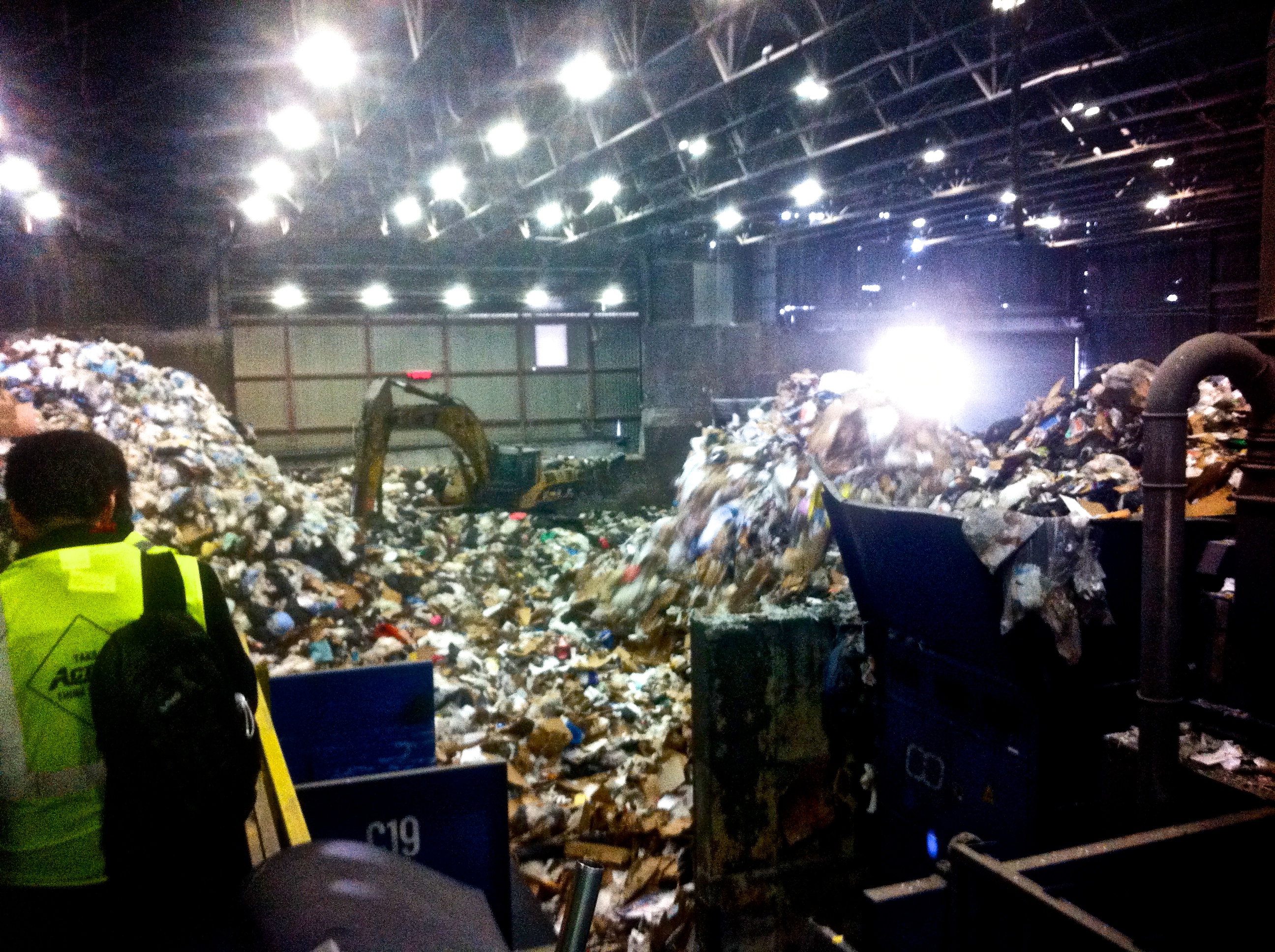 New York City's commercial waste. Hunt's Point is an industrial hub of activity in New York and houses one of the largest food distribution centers in the world. The area similarly is home to many private hauling services who collect and sort New York City's waste. On this particular day, we traveled to Hunt's Point to visit Action Environmental Services, one of the largest private waste haulers in the city.
New York City's commercial waste. Hunt's Point is an industrial hub of activity in New York and houses one of the largest food distribution centers in the world. The area similarly is home to many private hauling services who collect and sort New York City's waste. On this particular day, we traveled to Hunt's Point to visit Action Environmental Services, one of the largest private waste haulers in the city.
Action Environmental Services is not only of the largest haulers in the city, but also one of the most advanced. The company recently built a new facility with state of the art technology designed to better separate recycled materials increasing the company's waste diversion rate. This new technology allows the company to sort 300 tons recycling per day from commercial businesses. On average, commercial businesses produce 13,000 tons of refuse per day, all handled by private haulers like Action Environmental Services.
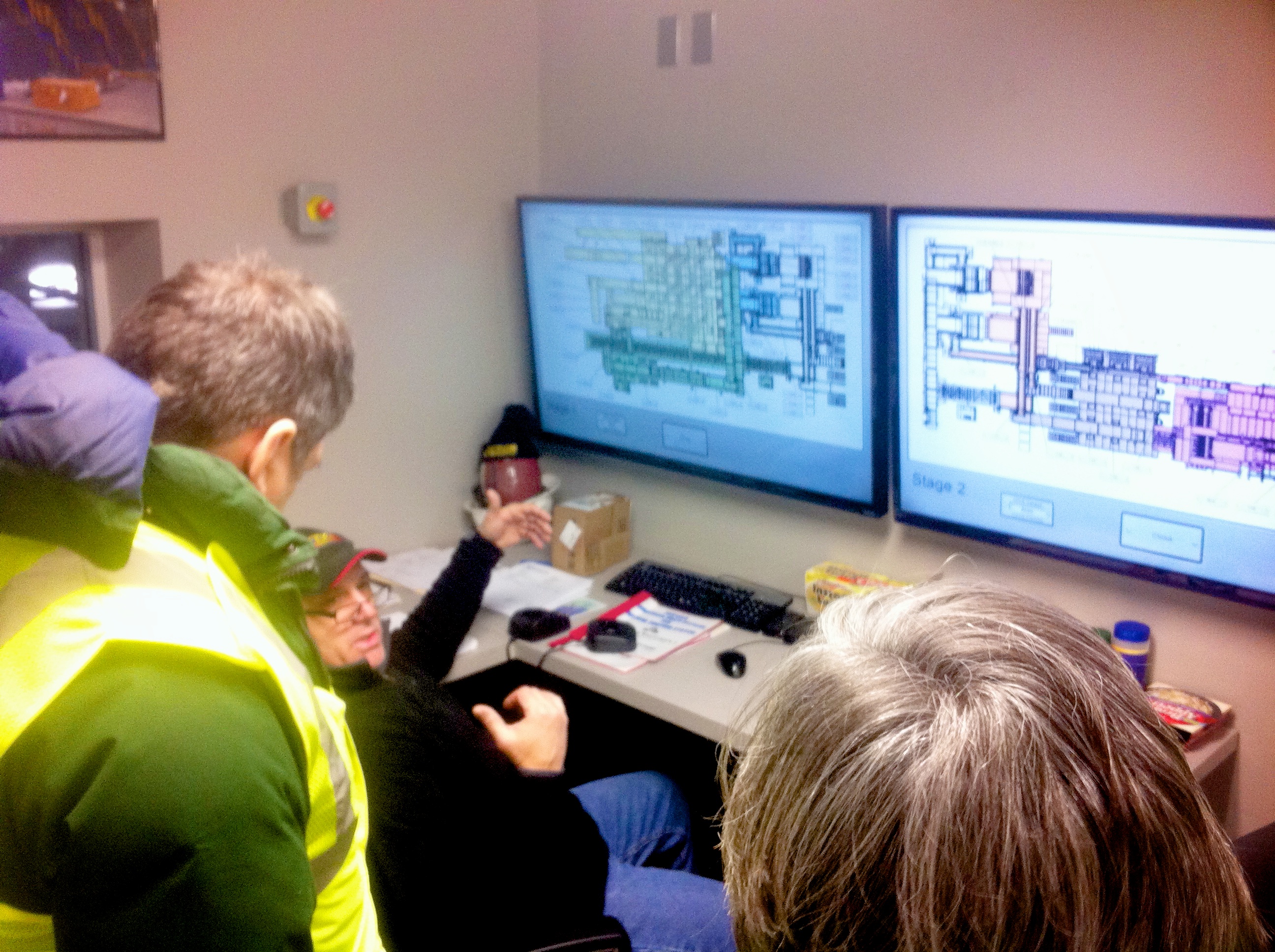 At the heart of this technology is a an optical sorter, a machine that uses infrared camera technology combined with compressed air to more accurately and efficiently separate recycled paper. The machine can separate plain white paper from colored paper down to the size of a business card within a fraction of a second, all of which decreases the amount of landfilled paper.
At the heart of this technology is a an optical sorter, a machine that uses infrared camera technology combined with compressed air to more accurately and efficiently separate recycled paper. The machine can separate plain white paper from colored paper down to the size of a business card within a fraction of a second, all of which decreases the amount of landfilled paper.
Our tour began with a view of the command room which has complete control of the entire operation and monitors activities through a series of cameras and machine sensors. We had the opportunity to speak with the head engineers to really get a sense of how the facility operates. We then proceeded out onto the floor where we could see and smell up close how the facility was operating. An enormous series of conveyer belts moved various types of waste from one end of the building to another being separated along the way.
In speaking with representatives from 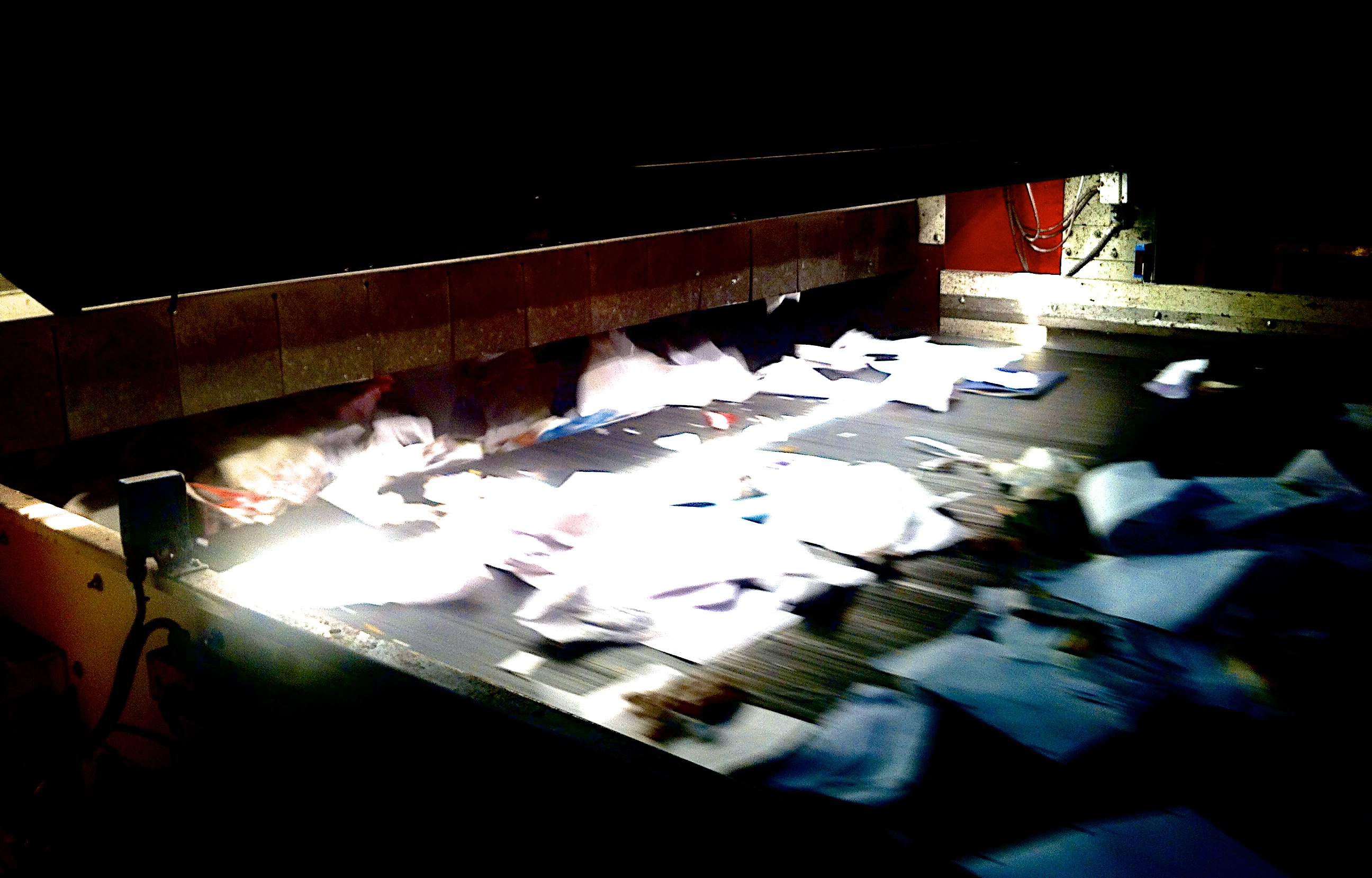 the company, we began to ask about some of the challenges and hurdles which the company faces. Overwhelmingly the biggest challenge is public education.
the company, we began to ask about some of the challenges and hurdles which the company faces. Overwhelmingly the biggest challenge is public education.
Action Environmental Services has begun, like much of the country and Europe, to collect recycling as a single. This means that instead of insisting that clients separate their recycling before collection, clients can actually place all of the recyclable materials into one bag to be collected. The concept of using technology to better separate waste allowing a single stream recycling system has, in many ways, revolutionized the recycling process. So what's the problem?
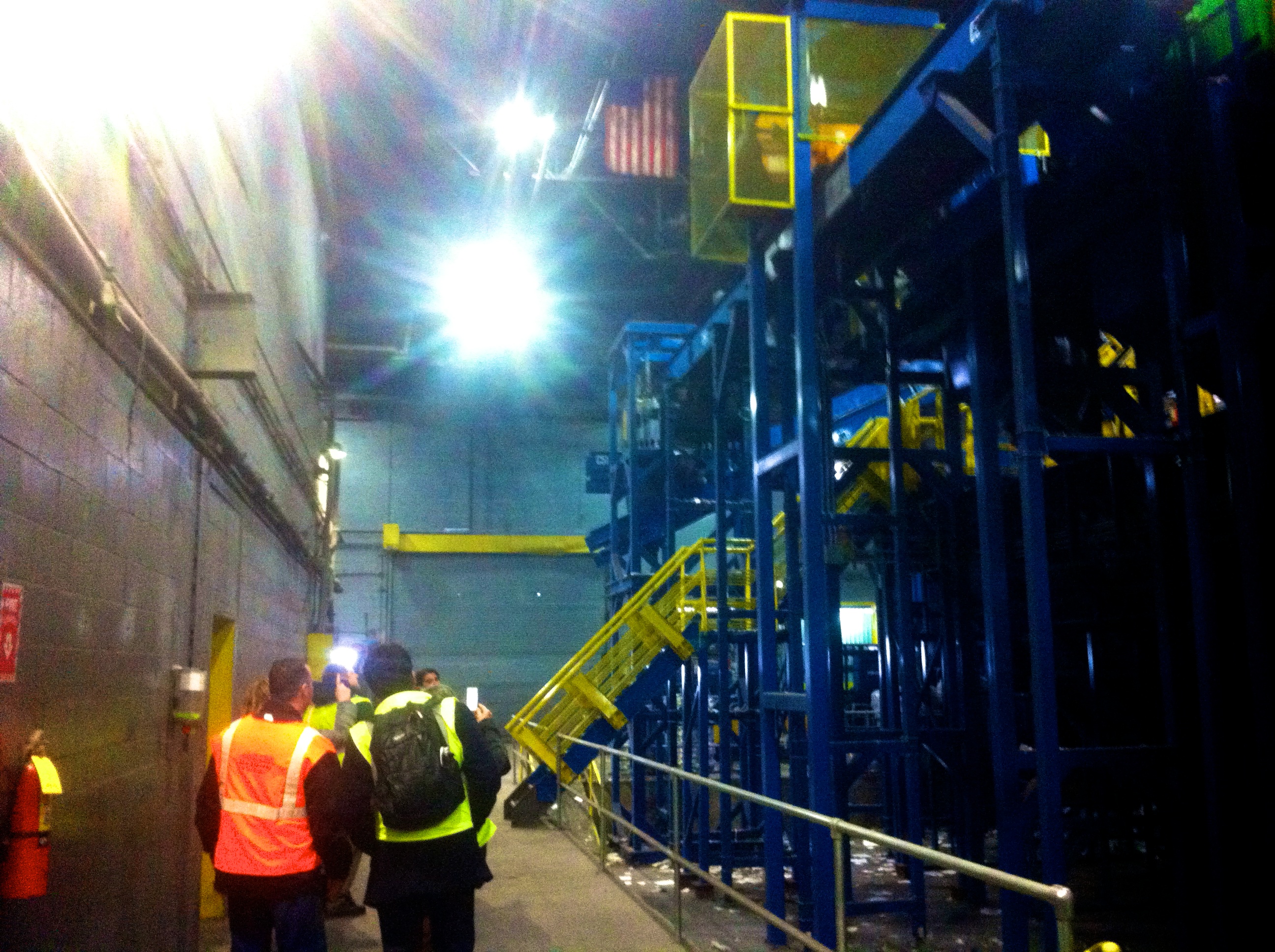 Now that recycling has begun to be collected as a single stream, the public has begun to 'contaminate' recycling loads due to placing items into recycling bins which should not be. Primarily, this is caused by people recycling products with liquids, oils and leftover food products which creates excess strain on the separating the materials afterward. Excessive moist materials can damage much of the separating technologies and ultimately force Action to discard loads to a landfill which are deemed contaminated.
Now that recycling has begun to be collected as a single stream, the public has begun to 'contaminate' recycling loads due to placing items into recycling bins which should not be. Primarily, this is caused by people recycling products with liquids, oils and leftover food products which creates excess strain on the separating the materials afterward. Excessive moist materials can damage much of the separating technologies and ultimately force Action to discard loads to a landfill which are deemed contaminated.
Our tour concluded with seeing a final pile of ridged plastics including hula-hoops, plastic folding chairs and detergent bottles, reach the baling machine. The materials were then compacted together and wrapped with wire rings to hold together. A forklift quickly collected the final bale and placed it on top of several other similar bale waiting to be loaded onto 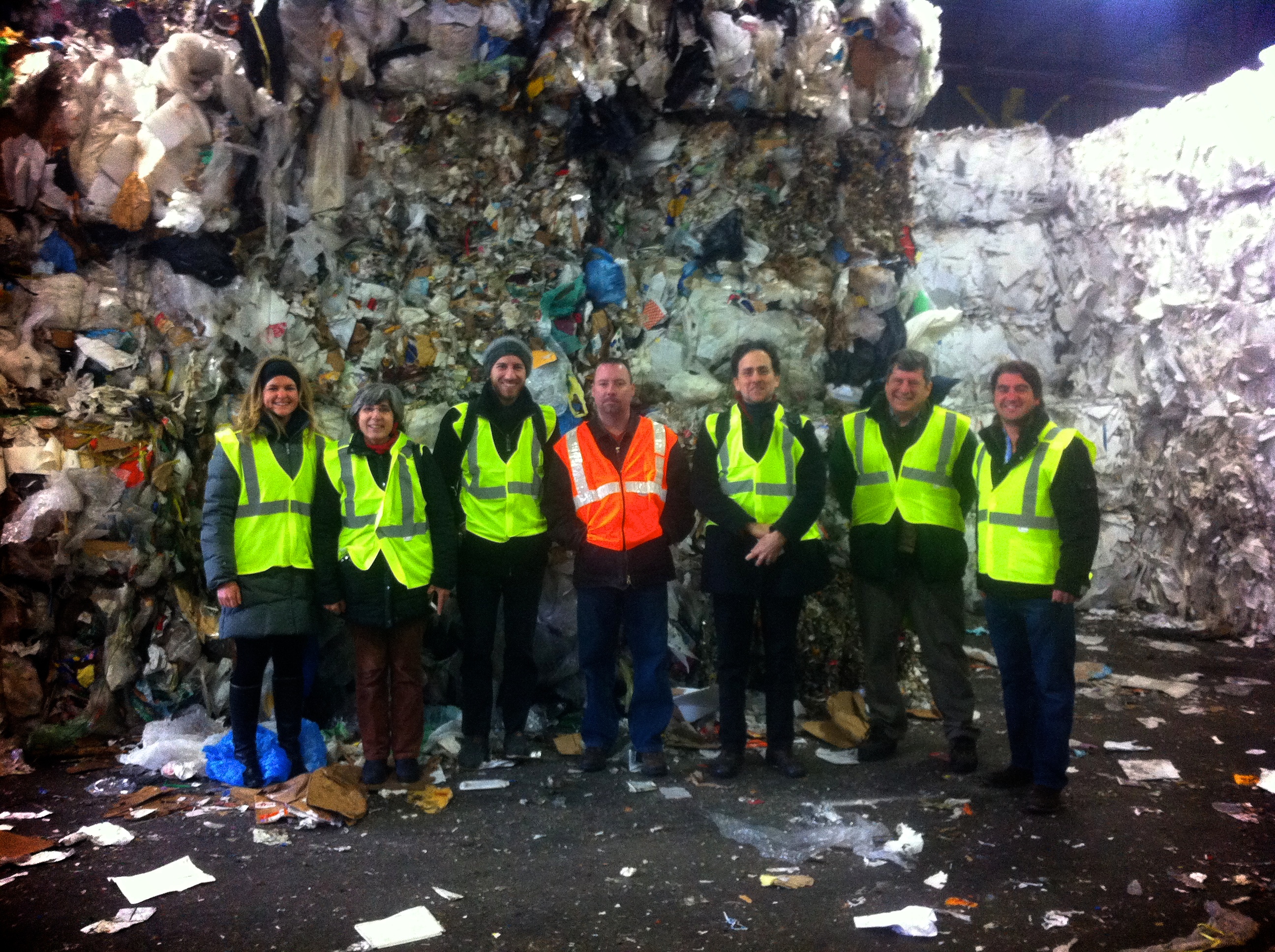 a truck. Once loaded onto the truck, the bale travels to a shipping yard in New Jersey, placed on a cargo ship, and shipped to companies in China where over half of recycled materials are sold.
a truck. Once loaded onto the truck, the bale travels to a shipping yard in New Jersey, placed on a cargo ship, and shipped to companies in China where over half of recycled materials are sold.